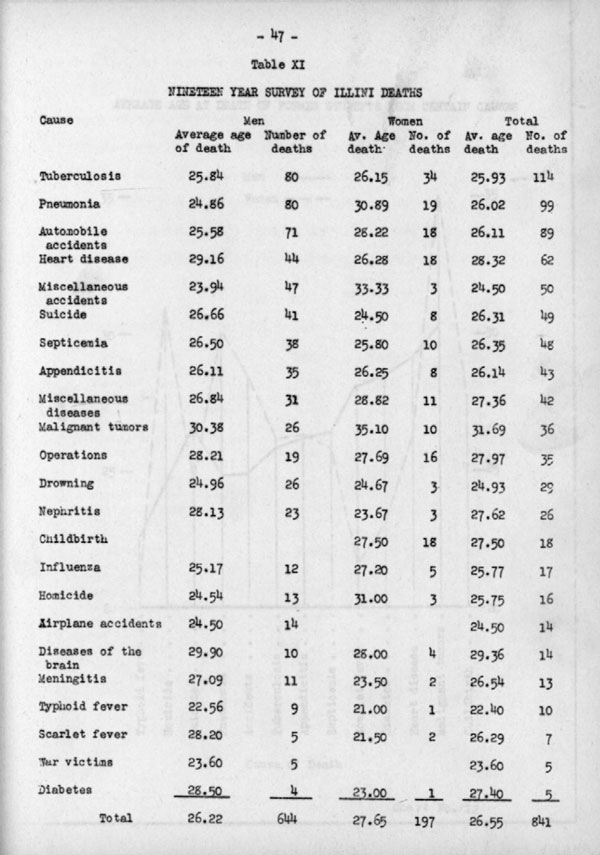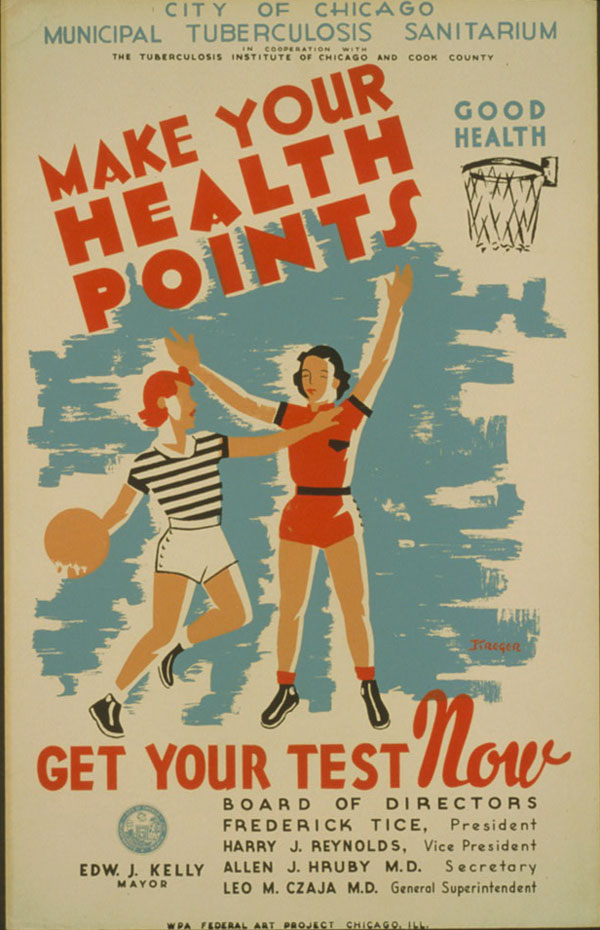This post is part four of the exhibit “Epidemic! Disease on Campus, 1918-1938.”
Despite the progress made controlling tuberculosis in the early 20th century, it was still the leading cause of death of adolescents and young adults through the 1930s. Champaign County documented 500 cases of tuberculosis and 75 deaths from tuberculosis in 1920 alone.[1]

Found in Record Series 41/2/33
Given the high numbers of tuberculosis patients in the Twin Cities, it is not surprising that this infectious disease was a chronic health problem at the University. From 1917-1936, at least 114 out of 841 deaths of former students stemmed from tuberculosis.[2] The difference between latent and active tuberculosis meant early diagnosis and treatment was of utmost importance for public health. Every active tuberculosis patient not hospitalized and isolated infected an average of three people. According to J. Howard Beard, “The most fruitful efforts in modern tuberculosis control are those concentrated upon the open cases and actual contacts. The rest is mopping up the floor without turning off the spigot.”[3]
Doctor Beard diagnosed and helped hundreds of patients with tuberculosis during his time at the Health Services Station, but the case of an indigent graduate student caused particular concern. Henry Alvertis Long graduated from the University of Illinois with a degree in Chemistry in 1928. Though originally from Metropolis, Illinois, he moved to Paducah, Kentucky to teach high school and save enough money to put himself through graduate school. Initially diagnosed with latent tuberculosis in 1923 as a boy, the disease became active in 1934 after he contracted a cold during his graduate studies. Upon diagnosis, he immediately moved to the student hospital to avoid spreading the disease to others in his African American fraternity. He remained under temporary Health Services supervision while medical authorities discussed further care and treatment.

WPA Federal Art Project, circa 1936-39
Unfortunately for Henry Long, his childhood county–Massac–closed their tuberculosis sanitarium in 1931. St. John’s Sanitarium, the closest treatment facility in Sangamon County, cost $8-$15 a week. Between his ill health and student status, Henry Long could not afford proper medical treatment. In an effort to assist a promising young man with little recourse, Doctor Beard corresponded with the Health Officer of Metropolis, the Massac County Commissioner, the Director of the State Department of Health, and the Executive Secretary of the Illinois Anti-Tuberculosis Association, advising them of Henry Long’s condition, his need for medical attention, his danger to others, and his lack of funds.[4]
Despite J. Howard Beard’s effort to secure proper medical care, neither the state or local service groups provided financial assistance. Henry Long returned to Metropolis under the care of a Civil Works Association nurse.
[1] “Tuberculosis is Greater Peril to Country–Becker,” Daily Illini, October 20, 1922.
[2] Hospital and Health Service Reports, 1935-36, Record Series 41/2/33, University of Illinois Archives.
[3] Communicable Diseases Materials, Record Series 33/1/806, University of Illinois Archives.
[4] Health Service Director’s Office General Correspondence, Record Series 33/1/1, box 1, folder “Henry A. Long-Active Tuberculosis Patient, 1934,” University of Illinois Archives.